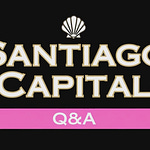Did The Milkshake Hit a Speed Bump?
Financial markets are having a bit of a meltdown…and not the kind that’s resolved with a pint of ice cream and a long walk.
The U.S. dollar just dropped 5% in 12 days.
Treasury yields are spiking.
Global equities are in sell-off mode.
And over in D.C., Trump’s trade war revival is rattling nerves from Tokyo to Frankfurt.
For fans of the Dollar Milkshake Theory, this cocktail of chaos has prompted a sudden flood of emails:
“Is it dead?”
“Has the theory failed?”
“Should I be hiding in a bunker with gold and freeze-dried beans?”
Let’s take a deep breath, swirl the glass, and assess the viscosity of our metaphorical milkshake.
A Week as Wild as a Hedge Fund Christmas Party
Last week, I told subscribers to expect weakness at the open, a possible bottom, and a bounce.
Nailed it…but not without a fair bit of drama.
The dollar’s 5% slide included a 3% cliff dive in the final two days. This isn’t supposed to happen.
When rates rise, the dollar usually perks up. This time, it face-planted.
Markets took the hint and followed the dollar down the drain.
Since April 2…dubbed “Liberation Day” after Trump’s fresh salvo of tariffs…the carnage has been global.
The Dow is down 5%, Germany’s DAX 10%, Japan’s Nikkei 6%, Europe broadly 10%, and both Hong Kong and Shanghai have seen 10% and 4% wiped off their boards, respectively.
Commodities split the vote: copper rose 12%, but oil shed 15%…proving that even in chaos, commodities will never agree on anything.
And before anyone thinks this is just America’s problem: it’s not.
Capital is being called home.
Foreign investors are cashing out of U.S. assets to deal with headaches closer to home.
The dollar’s weakness isn’t a betrayal of the theory…it’s a temporary cash call.
A hiccup. Not a heart attack.
The Milkshake in a Nutshell (For Newcomers and the Forgetful)
Conceived in 2018, the Dollar Milkshake Theory isn’t just a catchy name…it’s a map for navigating the wild terrain of global debt.
The idea is simple (though the execution rarely is): if we ever face a sovereign debt crisis…where investors reject government bonds and yields spike…then capital should rush to the U.S.
Why?
Because the U.S. has the deepest capital markets, the reserve currency, and (despite what Twitter tells you) still the world’s most reliable rule of law.
Here’s the kicker: as foreign economies try to print their way out of trouble, global liquidity surges.
That’s the milkshake.
But the U.S….with its dollar-denominated debt and deep markets….slurps up most of it. The result?
Rising U.S. equities, a stronger dollar, higher interest rates, falling bond prices, and gold rallies to keep the doomers happy.
I always warned this process would be messy…"terrifying drawdowns" were part of the forecast.
And while I never claimed to know the exact sequence, I’ve long believed in the long-term trajectory.
How’s the Theory Holding Up?
Well, we’re now five years in. Gold?
Up over 50%, recently flirting with $3,000+ an ounce. U.S. equities?
The S&P 500 has had a solid run (and some face-slapping dips). Interest rates?
Dormant during COVID, now roaring like a post-Fed press conference. Bond prices?
Dropping like bad crypto. The dollar?
Stronger over time against most currencies.
So yes, there have been bumps.
I was wrong about bonds early on…COVID threw a curveball.
But post-COVID, the pieces realigned: rates up, bonds down, dollar strong.
We haven’t yet seen the full sovereign debt blowup, but the framework has guided profitable decisions for me and explained most of the market’s eccentric behavior.
Déjà Vu With a Dollar Dip
The current 5% dollar drop feels eerily like early 2020, when COVID fears spurred a similar rush for cash.
Then, too, the dollar sagged…before surging 9% in ten days. We may be setting up for a replay.
Foreign investors, spooked by Trump’s new tariffs, are likely dumping U.S. stocks and Treasuries to shore up their own books.
The euro’s spike makes headlines, but it won’t last if history rhymes. Meanwhile, rising Treasury yields…normally dollar-bullish…aren’t pulling their weight. Why?
Two reasons: foreign holders (especially in Europe and Japan) are likely selling Treasuries, and two popular leveraged trades…the Treasury basis trade and the SLR swap spread trade…are unwinding.
Trump’s tariffs disrupted assumptions, widened spreads, and triggered a fire sale. Cue the yield spike.
For a graduate-level breakdown, check out Jeff Snyder’s Eurodollar University. Bring coffee.
The View from 30,000 Feet (or 90 on the DXY)
The global picture is no prettier.
Over the past five weeks, markets worldwide have tanked.
NASDAQ is down 9%, the Dow 7%, DAX and Nikkei both 12%, and the Hang Seng 9%.
Investors are risk-off, prioritizing short-term liquidity and local obligations. That puts pressure on U.S. markets…for now.
Stronger foreign currencies hurt exporters like Europe and Japan.
Their RSIs (Relative Strength Indexes) are signaling overbought.
Meanwhile, the dollar is oversold, hinting at a bounce.
Could the Fed drop QE into this mess? Sure.
That would temporarily weaken the dollar further. But by increasing global dollar-denominated debt, it would actually reinforce long-term dollar strength.
We’ve seen that movie before.
But what happens when the liquidity tide turns, and volatility isn’t just a phase—but a permanent feature?
The Four Horsemen of Financial Apocalypse (And Opportunity)
I’m tracking four charts like a hawk: the 10-year Treasury yield, the yuan-dollar cross, gold, and SOFR (Secured Overnight Financing Rate).
10-year yield: This drives global borrowing costs. Higher U.S. yields mean pain everywhere.
Yuan: China’s currency is pegged, but pressure is mounting. A 3% devaluation in 2015 caused global panic. Imagine what one now would do.
Gold: The fear barometer. A recent $100 intraday drop followed by a rebound? Buckle up.
SOFR: If this spikes it means liquidity is vanishing the whole world is in trouble.
Strategic Positioning: Where We Go From Here
Markets are oversold. Bonds, equities, the dollar…all flash “cheap” on the RSI and stochastic screens.
Commercial traders have covered some gold shorts, but that was prior to a $150 move higher.
We’re nibbling equities at Santiago Capital for underexposed clients. We’ve sold most of our TLT puts.
We’re not declaring all-clear. We’re just saying: don’t panic. Especially is you were alraedy prepared.
Is the Milkshake Over?
Short answer: no.
Longer answer: we’re in one of those terrifying drawdowns I warned you about.
This isn’t the end…it’s a mid-chapter dip.
Capital is fleeing the U.S. for now, but it’ll come rushing back once uncertainty clears or crisis deepens. Same thing happened in 2020 and 2022.
If I’m wrong…if capital permanently exits the U.S….then yes, the theory fails.
But so far, the track record’s been solid.
I’m not here to win debates…I’m here to make money for clients.
And the Milkshake Theory has provided a framework that has allowed us to do that for five years now.
The Road Ahead: Rocky, With a Chance of Rallies
Expect continued volatility.
We might see markets stabilize briefly, but I anticipate more pain into summer.
Watch for explosive, Trump-fueled intraday rallies, like last Wednesday’s 10% Dow pop.
Eventually, we’ll face a sovereign debt crisis: yields up, bonds down, and…ironically…U.S. equities and the dollar ripping higher alongside gold.
So here’s your game plan: stay diversified. Own gold. Keep some cash dry. Don’t chase fads.
And when the market panics, remember: sometimes, the best trades are born in silence.
Next week’s update promises more fireworks.
Until then, stir your milkshake, don’t shake your faith…and remember, capital will always find the cleanest dirty shirt in the laundry pile.
Sincerely,
Brent Johnson
🎯 Haven’t read our latest Santiago Capital Pro Research report, yet?












